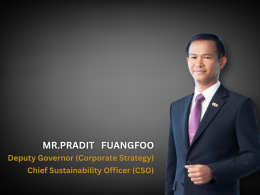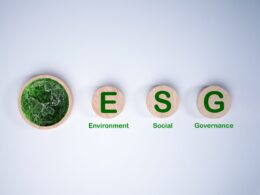In nearly 60% of banks in Emerging Market and Developing Economies (EMDEs), climate-related lending represents less than 5% of their portfolios, with over a quarter offering no climate financing at all, according to a new World Bank report.
This is concerning because banks dominate the financial sector in developing economies, unlike in advanced economies where financial services are more diversified. As climate change increasingly impacts economic opportunities and development in EMDEs, there is a pressing need for greater investment. EMDE banks could play a crucial role in bridging the climate financing gap.
The report, ‘Finance and Prosperity 2024, is the first edition of an annual series examining financial sector developments and vulnerabilities in low- and middle-income countries. It features two special topics: the Sovereign-Bank Nexus and Climate and the Banking Sector.
Based on new data, the report reveals disparities in the resilience and stability of financial sectors. Analysis of 50 countries, representing 93% of total bank assets in EMDEs, shows that 30% of these countries face high financial sector risks over the next 12 months. Most lack adequate policy frameworks and institutional capacity to manage financial stability challenges.
The report also highlights the risks posed by excessive government debt holdings by domestic banks, particularly in economies with weaker macroeconomic policies and public debt sustainability issues. Between 2012 and 2023, banks’ exposure to government debt increased by over 35%.
“Emerging market and developing economies face substantial financing gaps in low-carbon, climate-resilient investments. We need to step up climate action and crowd in private investment for countries most in need. This requires collective action, and the banking sector is indispensable in this transition process. It can play a pivotal role in financing a green, low-carbon, and sustainable development path,” said Axel van Trotsenburg, World Bank Senior Managing Director of Development Policy and Partnerships.
Globally, banking authorities are exploring new methods to support climate financing while maintaining financial stability and inclusion for underserved populations. For instance, green and sustainable taxonomies—systems that classify activities and investments to help countries achieve environmental goals—are vital for boosting climate-related lending. Currently, these taxonomies cover just 10% of EMDEs, compared to 76% in advanced economies.
“Adaptation is underfunded— only 16% of domestic and international climate finance in emerging market and developing economies is channeled for adaptation. Out of this small share, 98% is either public resources or official financing. In addition to increased climate-lending from banks, reducing this gap requires larger capital and insurance markets in developing economies to provide essential long-term funding for critical climate-resilient infrastructure. It’s also important to improve financial access for people, particularly those in vulnerable groups,” said Pablo Saavedra, World Bank Vice President for Prosperity.
The report recommends that countries strengthen bank buffers early, operationalise financial safety nets, conduct stress tests, and implement essential tools. These tools include robust interagency crisis-management mechanisms, fully operational emergency liquidity assistance, effective bank resolution frameworks, and well-funded deposit insurance systems to mitigate financial stress and prevent spillovers into the broader economy. Additionally, developing economies should consider introducing disclosure requirements for banks’ government exposures to promote prudent risk-taking and market discipline.




















